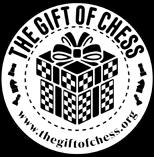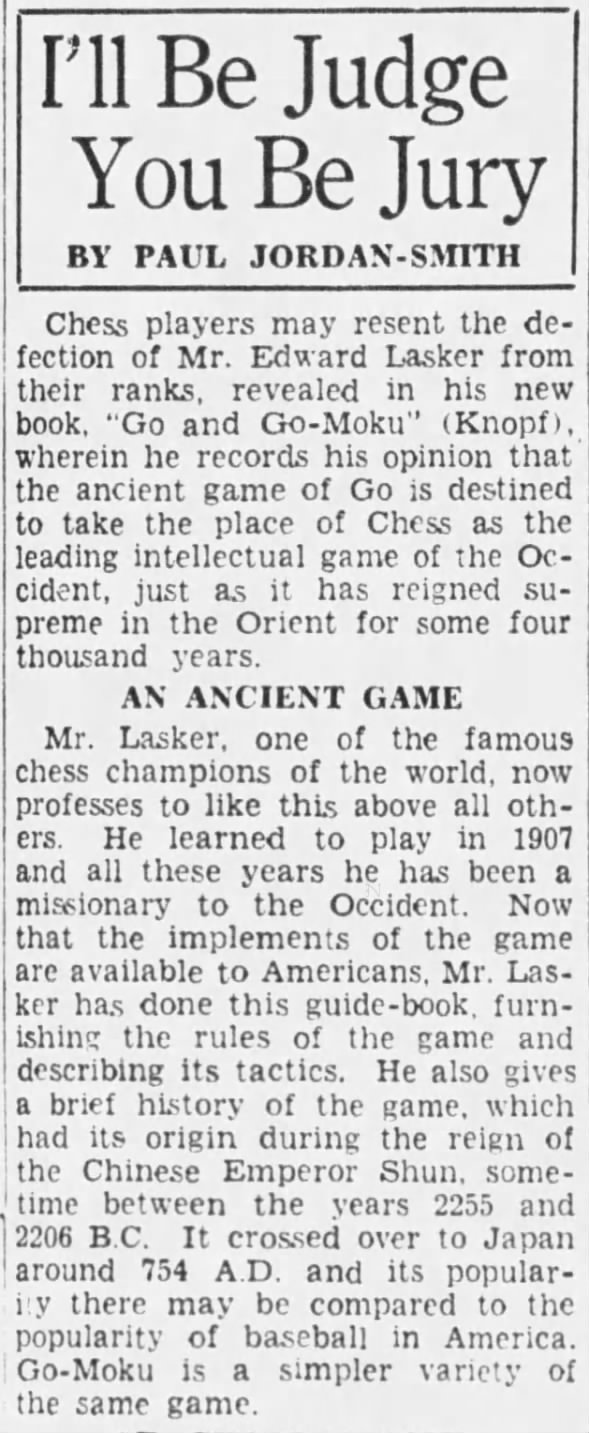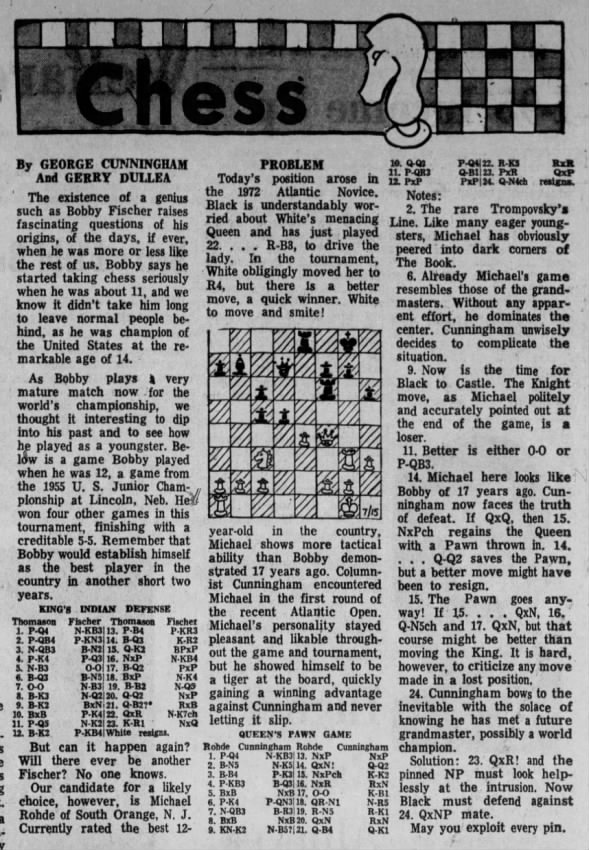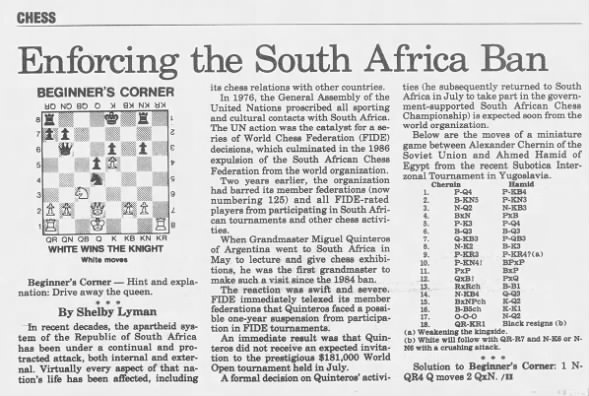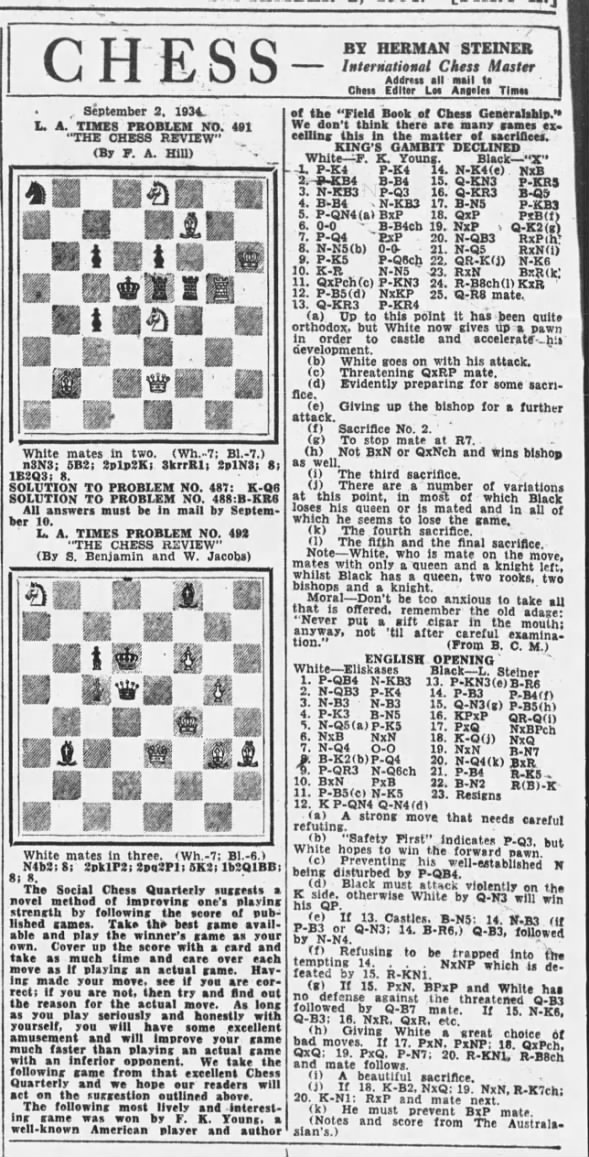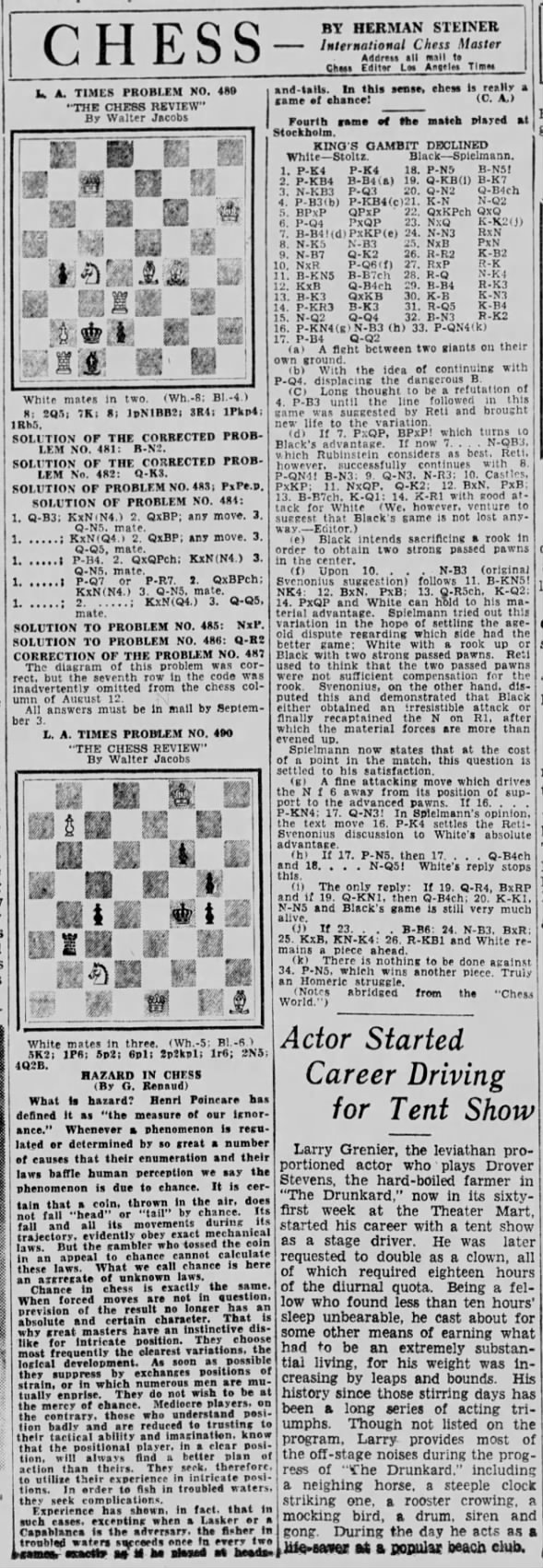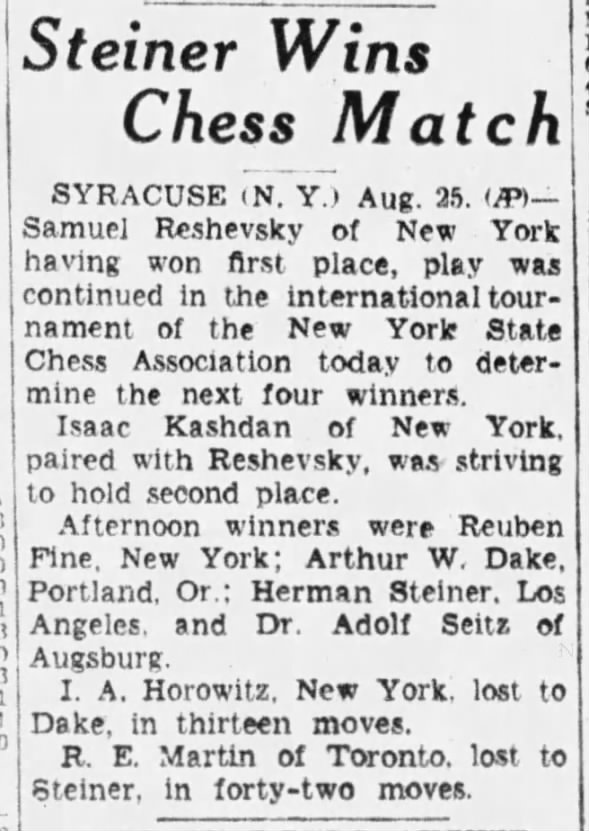 Chess by Herman Steiner 21 Oct 1934, Sun The Los Angeles Times (Los Angeles, California) Newspapers.com
Chess by Herman Steiner 21 Oct 1934, Sun The Los Angeles Times (Los Angeles, California) Newspapers.com
The Los Angeles Times Chess by Herman Steiner Sunday, October 21, 1934 Los Angeles, California L.A. Times Problem No....
Posted by Bobby Fischer's True History on Wednesday, September 1, 2021
L.A. Times Problem No. 505 “The Chess Review” by Nicholas Gabor. White mates in two.
FEN 5N1b/4Q1n1/R3q2k/5b2/3R2P1/8/8/B5K1 w - - 0 1
Key: R-Q5/Rd5
L.A. Times Problem No. 506 Composed for the Los Angeles Times by Harry Graham, Jr., Los Angeles. White mates in three.
FEN 6bk/3ppQpp/8/KpPPPPN1/PP4PP/2R4N/B4B2/4R3 w - - 0 1
Key: PxP e.p.(??)
Appended is another selection of games played in the tournament at Syracuse:
Arthur William Dake vs Samuel Reshevsky
Syracuse (1934), Syracuse, NY USA, rd 12, Aug-22
Reti Opening: Reti Gambit (A09) 0-1
Reuben Fine vs Isaac Kashdan
Syracuse (1934), Syracuse, NY USA, rd 12, Aug-22
Semi-Slav Defense: Meran. Sozin Variation I (D49) 1/2-1/2
Israel Albert Horowitz vs Reuben Fine
Syracuse (1934), Syracuse, NY USA, rd 2, Aug-14
Spanish Game: Morphy Defense. Modern Steinitz Defense Siesta Variation (C74) 1-0
Herman Steiner vs Samuel Reshevsky
Syracuse (1934), Syracuse, NY USA, rd 2, Aug-14
French Defense: Classical. Burn Variation Morozevich Line (C11) 0-1
Anthony Santasiere vs Arthur William Dake
Syracuse (1934), Syracuse, NY USA, rd 2, Aug-14
English Opening: King's English. Taimanov Variation (A25) 0-1
The following game was played in the tournament at Zurich:
Ossip Bernstein vs Emanuel Lasker
Zurich (1934), Zurich SUI, rd 7, Jul-20
French Defense: Classical. Pollock Variation (C14) 0-1


